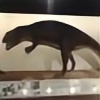HOME | DD
 Trendorman — Monster Island Expanded: Aquabates testudinidae
Trendorman — Monster Island Expanded: Aquabates testudinidae

#kaiju #monster #animalspecies #monsterislandexpanded #reptiles #tortoise #speculativeevolution
Published: 2017-07-27 22:26:58 +0000 UTC; Views: 3190; Favourites: 87; Downloads: 7
Redirect to original
Description
Name: Aquabates testudinidaiType: Native Reptile
Species: Tortoise
Diet: Herbivore piscivore
Discovery: Found on the Island
Habitat: Warm slow moving fresh water
Population: Thousands
The Aquabates also known as Monster Island Hippo Tortoise is a species of Tortoise that can be found in freshwater pools and streams that run through the islands interior. Standing at 8 feet tall at the shell. Often times be much to big for even sharks and Caiman and now still being to large for most aquatic species that where placed on the island such as certain fish and marine reptiles too harm. The shell of the Aquabates is strong enough to hold itself under the pressure of a bite from a Great White Shark or a Kronosaurus.
The Aquabates is a species of tortoise decedent from from ancient sulcata ancestors around 30 million years ago. As the years went on this particular species of tortoise took to the islands waters which was relatively empty of large predators and filled with many kinds of soft aquatic plant species which the animal could feed on. As time continued they eventually took an almost completely aquatic life spending about 90 percent of their life in the water. Unlike turtles however they did not evolve flippers or more stream lined shells but adapted to live similar to hippos in Africa.
Aquabates spend 30 minutes at a time or longer to spend underwater standing on the floor of the stream or lake, they use it feeding on aquatic plants and small animals and fish no larger than a few centimeters. They are weighed down by their shell while at the same time its not enough for the creature to actually fully sink because an air pocket exists in the tortoises shell that helps it actually swim when it needs too. Their long sauropod like neck lets them eat foliage hanging over the waters edge and during the late night they come too land too feed
The female lays a clutch of 30 eggs deep within a sandy bay or even in large leaf and dirt piles. When their young hatch they spend 6 months on land in dense overgrown areas or in thick knotted roots before they grow large enough to be in open water. Being a light grey color with black stripes on it shell, it can easily camouflage itself into rocky stream and lake beds but mostly is found in open clear or green fresh water because they are so large and tough.
Some individuals are believed to be as much as 300 years old.
Related content
Comments: 6

👍: 0 ⏩: 1

👍: 0 ⏩: 0

In the water it's light enough to grow these legs!
👍: 0 ⏩: 0

have you seen this piece? (Don't forget to add creatures mentioned in the bio, too! Not complaining, but I noticed you accidentaly forgot to add many creatures that I mentioned in the texts.) Have a nice day!
👍: 0 ⏩: 0




















